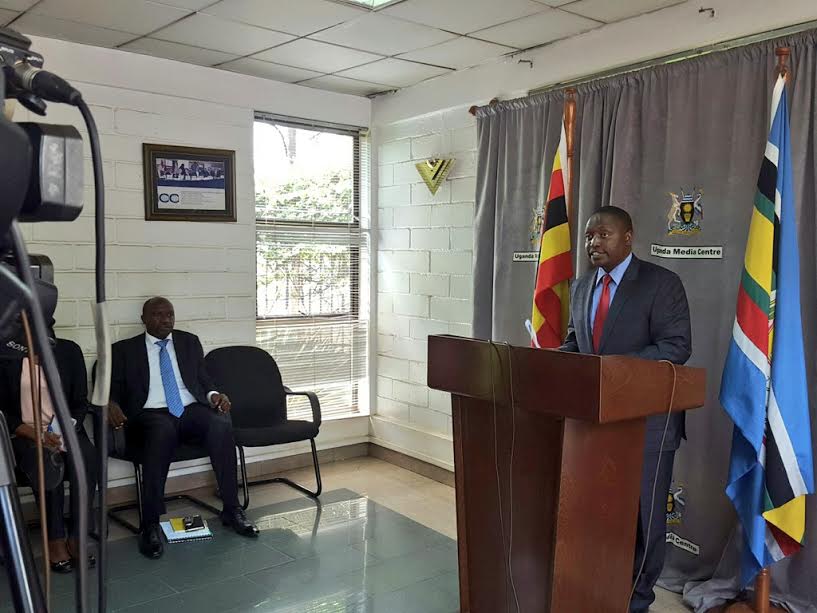Uganda’s economy has started regaining from a slump and is expected to grow at 5.2 percent in the new financial year 2017/18, the latest Uganda Economic Update published by the World Bank and launched today in Kampala shows. If achieved, the new growth rate would better the 3.5 percent the bank awarded the country last financial year, much as the government of Uganda official economic growth stood at 3.9 percent as read by the finance minister in the new national budget in June.
The Economic Update, launched by the State Minister for Finance David Bahati at the ministry’s headquarters in Kampala, further projects that the country would realise a 6.0 percent economic growth in the financial year 2018/19 should all factors remain constant.
Commenting on the Economic Update, Minister Bahati said that it presents a positive picture of growth and that government is undertaking efforts to push the economy back on the right track. “We are pleased that the Economic Update has shown that the economy is growing,” Minister Bahati said of the report.
But for now, at the projected economic growth of 5.2 percent, the country’s private sector, which is a key engine of economic growth would continue to face challenges of low levels of business confidence, the strife in neighbouring South Sudan and the high cost of credit.
But the update on the positive note states that the overall investment growth is expected to be boosted as foreign directive investment in the extractive sector increases, more so, citing the recent oil pipeline agreement signed by governments of Uganda and Tanzania.
The Update which is calls for the public-private partnerships (PPP) to finance major infrastructural projects, suggests that government improve tax collection measures so as to collect more revenue for projects. “Revenues collected are to low to support large infrastructure base and this is further threatened by government’s renewed tendency to grant tax exemptions,” it reads.
Presenting the update, Ms Rachel Sebudde, World Bank’s Task Team Leader, Uganda Economic Update, said that Ugandan government must be careful to avoid circumstances that could lead to unnecessary hike in financing of infrastructural projects like roads and electric power dams.
Estimates show that Uganda loses US$ 300 million per year in inefficient infrastructure spending mostly through underpricing and inability to complete projects within the cost and on schedule. Currently it is estimated Uganda spends one billion US dollars annually on infrastructure, even as analysts say the country needs to spend US$1.4 billion per year in the medium term to bridge the infrastructure gap.
Ms Sebudde advises government to use the PPP arrangement, saying it’s the cheapest approach of financing infrastructural projects, but government, she says has to have capacity in negotiating contracts.
So far Uganda has had 24 projects financed through the PPP totaling US$1,830.69 million, but this represents 8.3 percent as Uganda’s share in sub- Saharan African region.
Ms Sebudde, however, says Uganda should ready itself for the PPP through training human resource, and putting legal frameworks such as policies, laws and guidelines, saying failure to do this would lead to a country losing out to the private sector who are out to make abnormal profits at the expense of government.








